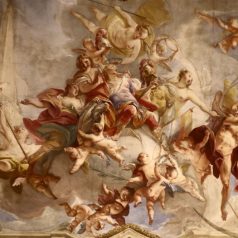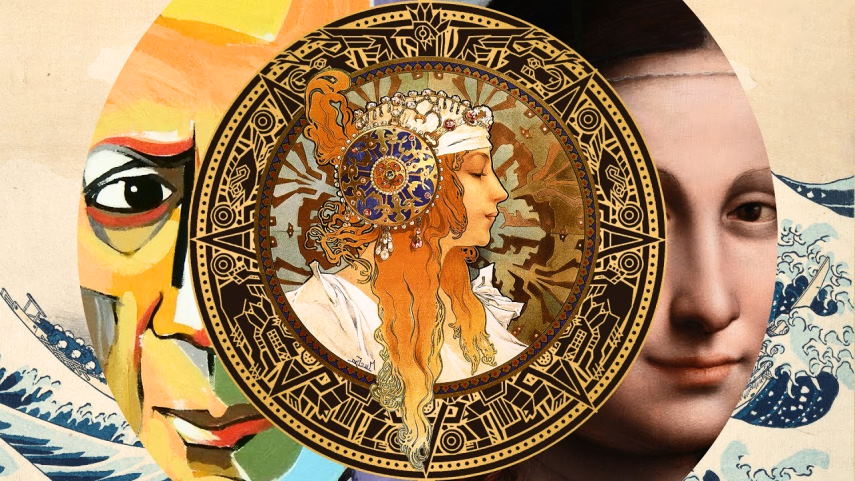The Fascinating History of European Art Movements

While the history of art is often thought of as primarily focused on European movements, there is a rich and fascinating history to be found in other parts of the world. Nevertheless, the story of European art is an important and complex one, full of twists and turns that have shaped the course of Western civilization. In this blog post, we’ll look at some of the most significant art movements to come out of Europe, from the Renaissance to Surrealism. Along the way, we’ll explore how each movement emerged, what made it unique, and how it continues to influence artists today. So grab a cup of coffee and settle in for a crash course in European art history!
The top European art movements you need to know
When it comes to art, Europe has a long and rich history. From the Renaissance to the present day, European artists have significantly impacted the world of art. Here are some of the top European art movements that you should know about:
- The Renaissance
The Renaissance was a period of great cultural and artistic revival in Europe that took place from the late 14th century to the 16th century. It is considered one of the most important periods in European history, as it saw a renewed interest in classical learning and culture. Major artists of the Renaissance include Leonardo da Vinci, Michelangelo, and Raphael.
- The Baroque
The Baroque was an artistic style that originated in Italy in the late 16th century and spread throughout Europe in the 17th century. It is characterized by its dramatic, theatrical, and often ornate style. Major artists of the Baroque include Caravaggio, Bernini, and Rembrandt.

- The Rococo
The Rococo was an artistic movement that emerged in France in the early 18th century as a reaction against the formal rigidity of the Baroque. It is characterized by its lightness, elegance, and playfulness. Major artists of the Rococo include Watteau, Boucher, and Fragonard.
- Neoclassicism
Neoclassicism was an artistic movement that emerged in Europe in the mid-18th century as a reaction against the excesses of the Rococo. It is characterized by its classical style, inspired by the art of ancient Greece and Rome. Major artists of Neoclassicism include David, Ingres, and Canova.
- Romanticism
Romanticism was an artistic movement that emerged in Europe in the late 18th century and reached its peak in the 19th century. It is characterized by its emotional and expressive style, which often sought to capture the feeling of nature. Major artists of Romanticism include Caspar David Friedrich, J.M.W. Turner, and John Constable.
- Impressionism
Impressionism was an artistic movement that emerged in France in the late 19th century. It is characterized by its use of light and color to create an impression of the scene rather than a realistic depiction. Major artists of Impressionism include Claude Monet, Pierre-Auguste Renoir, and Camille Pissarro.
- Post-Impressionism
Post-Impressionism was an artistic movement that emerged in the late 19th century as a reaction against the limitations of Impressionism. It is characterized by its use of bold colors and thick brushstrokes. Major artists of Post-Impressionism include Paul Cezanne, Vincent van Gogh, and Georges Seurat.
- Cubism
Cubism was an artistic movement that emerged in France in the early 20th century. It is characterized by its use of geometric shapes and forms to depict objects from multiple perspectives. Major artists of Cubism include Pablo Picasso and Georges Braque.
- Futurism
Futurism was an artistic movement that emerged in Italy in the early 20th century. It is characterized by its embrace of modernity and technology and its dynamic style. Major artists of Futurism include Umberto Boccioni and Giacomo Balla.
- Surrealism
Surrealism was an artistic movement that emerged in the 1920s. It is characterized by its use of irrational imagery and fantastic themes. Major artists of Surrealism include Salvador Dali and Rene Magritte.

A brief history of early European art movements
One of the first art movements in Europe was Impressionism. This style of painting emerged in France in the late 1800s and was characterized by its use of light and color to create an impression of a scene rather than a realistic representation. Another early art movement was Cubism, which began in France around 1907. Cubist artists seek to break down objects into their basic geometric shapes, creating paintings that appear abstract or even disjointed.
Futurism was another important early 20th-century art movement that originated in Italy. Futurist artists were interested in capturing the modern world’s dynamism, speed, and energy. They often incorporated machine-like elements to convey this sense of motion and progress.
Abstract expressionism was an art movement that originated in New York City in the 1940s. This style of painting is characterized by its large, sweeping brushstrokes and use of color to convey emotion. Abstract expressionist paintings often appear chaotic or even unfinished, but they can also be very powerful and evocative.
Pop art was a major art movement that emerged in Britain and the United States in the 1950s. Pop artists sought to challenge traditional ideas about what art should look like by using everyday objects and images from popular culture.
Minimalism was another important 20th-century art movement that began in the 1960s. Minimalist artists were interested in creating works stripped down to their essential forms and devoid of any unnecessary elements. This often resulted in extremely simple works yet still had a profound impact.
These are just a few important art movements that emerged in Europe during the 20th century. Each of these movements had a significant impact on modern art, and they continue to influence artists today.

 Each monthly issue features exhibition reviews, interviews with leading artists, and in-depth essays by critics, curators, and scholars at the forefront of their fields. Centre-fuge Art today reaches both influential art world insiders as well as a broad audience invested in understanding pivotal cultural trends.
Each monthly issue features exhibition reviews, interviews with leading artists, and in-depth essays by critics, curators, and scholars at the forefront of their fields. Centre-fuge Art today reaches both influential art world insiders as well as a broad audience invested in understanding pivotal cultural trends.